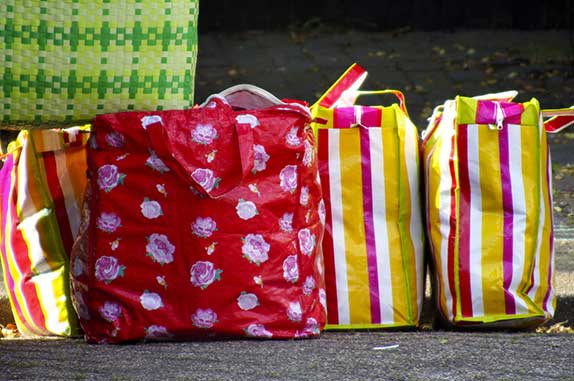Do you need a bag for that?
Worldwide, consumers use an estimated one trillion plastic bags a year. Yes—a trillion. That equates to approximately two million bags every minute. Considering the average bag is used for only 12 minutes before being disposed of, and less than 5 per cent of these bags are recycled, that’s a lot of plastic going to landfill or becoming white pollution in the environment.
In Australia, several states and territories have introduced bans on lightweight (high-density polyethylene—HDPE) shopping bags over the past few years. These include South Australia, the Northern Territory, Australian Capital Territory and Tasmania. Since being implemented each state or territory has reported high levels of compliance, a reduction in plastic bag litter and growing consumer support for the ban. While the remaining states have been slow to act, Australia’s two major supermarkets—Coles and Woolworths—announced in 2017 that they would phase out single-use plastic bags within 12 months.
As a replacement for the HDPE bags, supermarkets offer two alternatives. You can purchase a ‘boutique shopping bag’, a low-density polyethylene (LDPE) that usually sells for around 15 cents. These are made of thicker, stronger plastic, similar to those still offered for free by department stores and other non-grocery retailers, and customers are encouraged to reuse the bags multiple times. The other option is a ‘green’ bag, made of non-woven polypropylene, which usually costs around one dollar.

The important thing to remember is that more resources are used in the production of these more durable, tougher bags. In order for their overall environmental impact to be lower than the traditional HDPE shopping bags, they must be reused multiple times to account for the extra resources that go in to their production. The LDPE shopping bags must be used four times, the ‘green’ bags 11 times and a cotton bag 131 times. If a customer ends up buying a boutique LDPE bag, taking their groceries home in it, then simply using it as a bin liner, then they are actually having a worse impact on the environment than if they used a traditional HDPE bag.
The non-woven polypropylene ‘green’ bags can be returned to some supermarkets to be recycled when they wear out, however this is a very labour-intensive process. The stitching that holds the bag together can’t be recycled so has to be removed. The cost of labour in Australia makes this an unprofitable process, so the old bags are sent to China where the work is done by people receiving much lower wages.
So, the positive environmental outcome comes at a price. The best way to reduce plastic bag use is to say ‘no thanks’ when offered a bag at the checkout.





